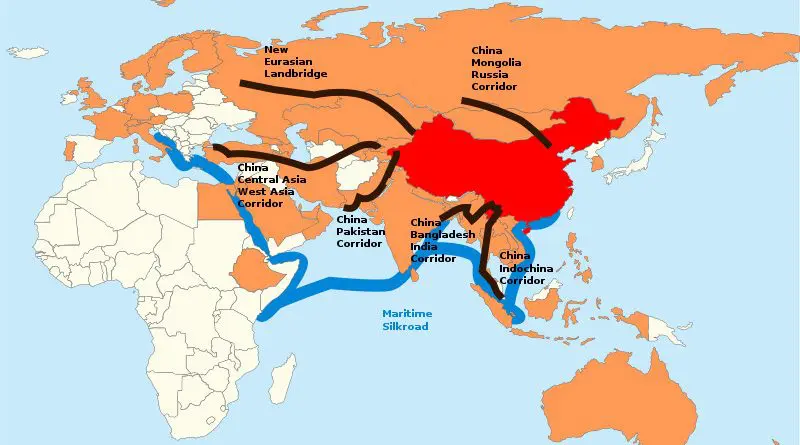Connectivity Through BRI – OpEd
Does the Belt and Road Initiative (BRI) signify China’s political growth or is it reflective of the developing world’s inclination towards economic connectivity? In either of the case, it is the new trend of regional connectivity that is gaining momentum. China’s outreach to world regions’ refers to a trans-regional growth. It foretells that China through trade links is cultivating new economic partnerships. China’s openness to outside world is a progressive shift in the East Asian country’s foreign policy outlook.
Meanwhile, seeing the smooth progression of BRI in developing world shows the countries tilt towards economic integration. It indicates that the states through economic connectivity want to grow. This trans-regionalism refers to a globalised world in which political interactions are centered around economic interdependence and technological exchange. Thus, in a world of geo-economics and broadband inter-connectivity, economic prowess has emerged as a bridge in linking of world regions / countries.
Seeing the BRI’s vision of connectivity, the initiative has linked world regions through roads, rails and seaports. A unique aspect of BRI is development for all. Regions’ least integrated, regions less developed and regions with economic strength all are part of BRI. Likewise, the countries joining BRI have different economic growths, some are economically stable while others are struggling economies. Similarly, BRI has made inroads in regions facing challenges of extremism and terrorism. Thus, the strategy of BRI is to connect and deter the challenges. This inclusivity and the approach of collective progress are the factors that have attracted the world towards BRI. This aspect of BRI has been described by Chinese President Xi Jinping, he says: “BRI is a response to the formidable challenges confronting the world. Global growth requires new drivers, development needs to be more inclusive and balanced, and the gap between the rich and the poor needs to be narrowed.”
In Africa alone, 100,000 kilometres of highways, 1,000 bridges and around 100 seaports have been constructed. Albert Muchanga, AU Commissioner for Economic Development, Trade, Tourism, Industry and Minerals opines that the development of infrastructure in Africa has eased the flow of goods across the continent. Thus, it has opened up prospects of trade cooperation within the African countries. Currently, there are over 10,000 Chinese companies operating in Africa. The ‘Mombasa-Nairobi Standard Gauge Railway’ in Kenya and the Port of Bagamoyo in Tanzanai are projects that will provide the African people with job opportunities.
The China-Pakistan Economic Corridor (CPEC) is another milestone of BRI, the project so far has seen investments of US$ 26 billion in energy and infrastructure sectors. South Asia is one of the least integrated regions globally. However, with CPEC’s advent, the region will be connected with East Asia and Central Asia. This economic connectivity will open up prospects of industrialisation and trade cooperation. Thus, the regional countries with economic strength will be able to counter the challenges of poverty and extremism. The incentives offered by economic integration are in actual an answer to the challenges of the developing world.
In view of the ongoing regional developments, the forces of globalisation and regionalism have set the pace towards connectivity and economic integration. With geo-economics lead role, states in pursuance of economic benefits are adopting transnational approaches. The idea associated with regional connectivity is economic integration, diversification of trading ties and securing energy routes.
Critics may argue that the China’s building of seaports in Pakistan, Sri Lanka and Myanmar is more of a geopolitical move aimed at expanding China’s sphere of influence. The critics need to look at seaports from a wider lens, these seaports are significant in terms of regional connectivity and trade cooperation. The seaports will immensely contribute to regional countries economic development. Besides, in the past, South Asia has been a victim of Cold War politics, and war on terror. In both the global developments, the regional countries have swallowed the brunt of wars fought in neigbouring Afghanistan.
Unlike the past, current developments like China’s enhanced role in region, in backdrop of BRI is an opportunity to build the economic muscle and counter the challenge of poverty, and terrorism. The regional countries trading ties with adjoining regions’ will make the foreign policy more economic centric. This may prove instrumental in making the regional environment less confrontational. Thus the economic impact of BRI is likely to engender a peaceful regional environment.

